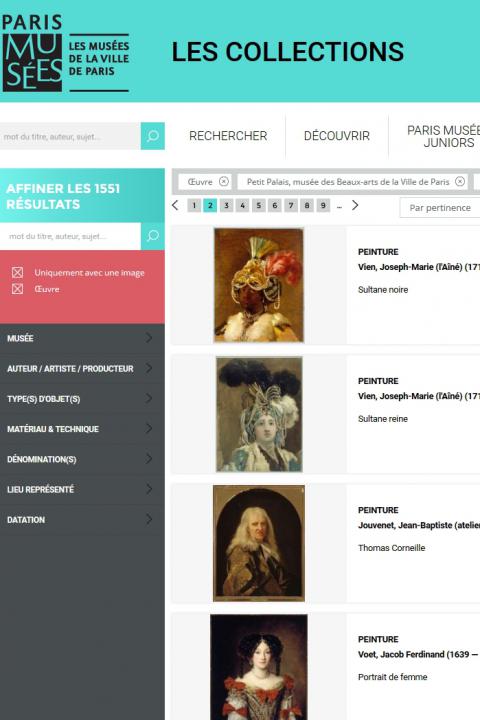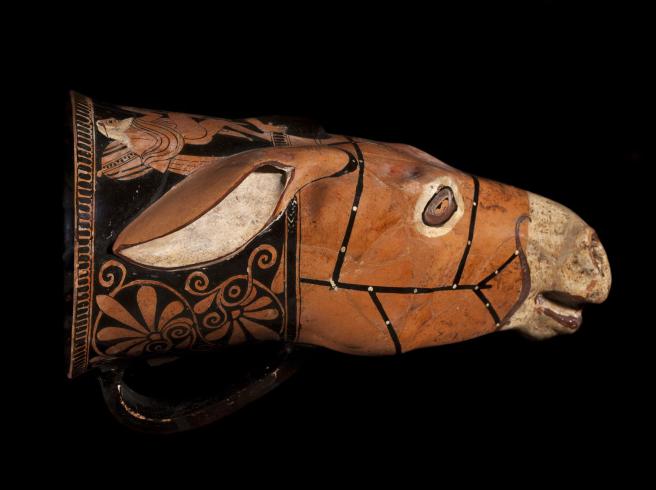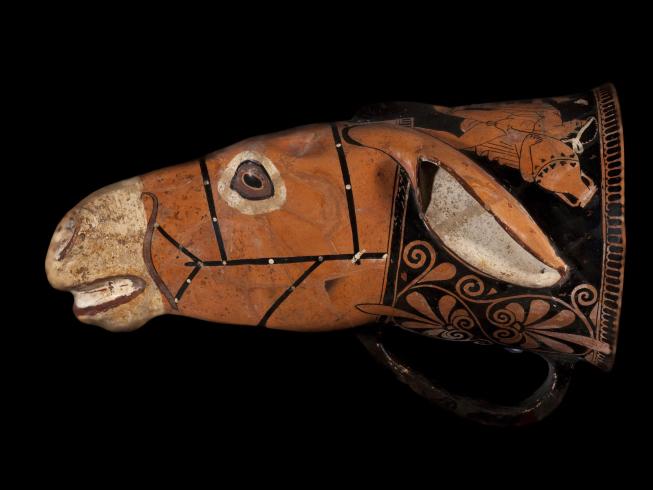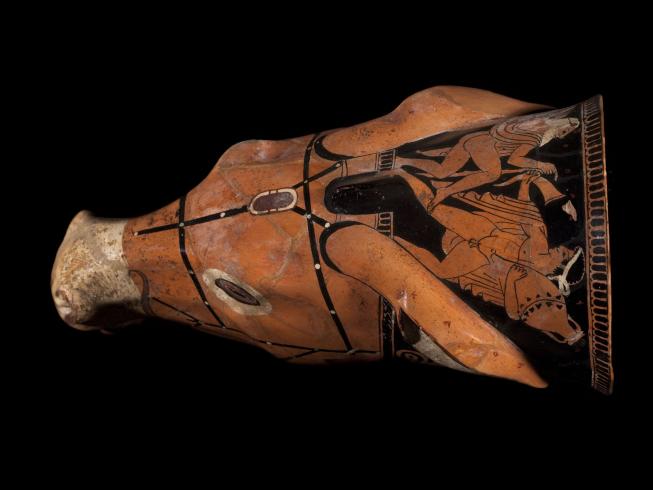The rhyton, an Eastern banqueting tradition borrowed by the Greeks, appeared in Athens in the early 5th century B.C. It was the drinking vase of Dionysos and the heroes, and when used during the banquets of the Athenian elite it associated the drinker with the heroic world and its values.
The rhyton decorated by the Colmar Painter belongs to the first generation of these vases produced in Athens.
The artist, whose real name is unknown to us, is named after one of his works, a cup conserved at the Schongauer Museum in Colmar. During his very long career, which continued until the 470’s B.C., he mainly devoted his time to decorating cups.The rhyton at the Petit Palais is the only one that we can attribute to him. He has left us scenes full of life, treated with equal amounts of delicacy and vivacity. Enthused by the study of movement, he had a particular preferences for three-quarter and rear views. It is in this spirit that he depicts a young banqueter “armed” with a drinking horn and amphora, dancing between the ears of the dionysiac mule, perfectly if somewhat precariously balanced, with his white-haired companion, rejuvenated by the spirit of the banquet.
P. P.-H.

City of Paris municipal collection's website
The collections portal can be used to search the collections of Paris’s 14 municipal museums (approximately 336,000 works, including 43,000 belonging to the Petit Palais).
It is also possible to download around 12,000 images of the museum’s works free of charge.
Access the Museums of the City of Paris collections portal
Extern databases
Discover a selection of databases online presenting works from the Petit Palais or documents concerning the history of the museum.



